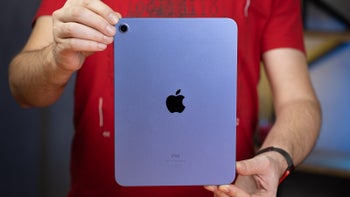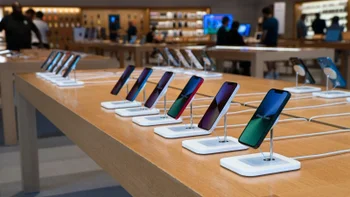Apple reportedly asked suppliers to build 90 million new iPhone units for 2022, same as last year

According to Bloomberg, even with smartphone sales expected to slow this year, Apple is telling its suppliers to build the same number of new iPhone units as it did last year. That would be 90 million iPhone 14 handsets. Combined with older models, Apple is expected to have 220 million handsets made during 2022, approximately the same number of iPhones that Apple had assembled last year.
Apple is rumored to have ordered 90 million new iPhone units for 2022, flat with the number ordered last year
Analysts at IDC expect smartphone sales to decline 3.5% in 2022 and despite this forecast, Apple feels positive enough about iPhone sales to keep production of the latest models flat with a year ago. Apple is still counting on its customers to continue to pony up for a premium handset. Besides having a deep-pocketed customer base, Apple is also helped by the disappearance of Huwaei as a threat in the marketplace.

Apple will build 90 million iPhone 14 units this year, the same number it built last year for the iPhone 13 line
U.S. restrictions placed on Huawei for security reasons prevent the Chinese manufacturer from accessing its U.S. supply chain (including Google). The company is also blocked from buying cutting-edge chips from foundries that use American technology. That has forced Huawei to sell phones using its own Harmony operating system and equip its flagship handsets with a special version of the Snapdragon 888 chipset that does not support 5G frequencies.
Apple had typically ordered 75 million new iPhone units each year until last year when it requested that suppliers deliver 90 million units. It was a good call for Apple as the iPhone 13, iPhone 13 Pro, and the iPhone 13 Pro Max have been the top selling smartphones according to various reports. The one model not in that group is the iPhone 13 mini which Apple is replacing this year with a non-Pro variant of its 6.7-inch device.
Apple decided to hike production last year since it calculated that the first new models available after the start of COVID vaccinations would sell well. In the most recent report that Apple issued, for the fiscal third quarter that ended in June, Apple reported $40.67 billion in iPhone revenue. That figure topped last year's number and Wall Street's expectations. The iPhone is Apple's largest business segment followed by its Services unit which generated $19.6 billion in gross during the fiscal third quarter.
In about four weeks, we expect Apple to introduce the 6.1-inch iPhone 14, 6.7-inch iPhone 14 Max, the 6.1-inch iPhone 14 Pro, and the 6.7-inch iPhone 14 Pro Max. This year Apple is widening the dividing line between the non-Pro and Pro models in an attempt to draw more consumers to the pricier Pro units.
For example, Apple typically would give all of its new iPhone models every year the latest A-series chipset. This year, in a break from tradition, the non-Pro iPhone 14 models will feature the same A15 Bionic chip found in the iPhone 13 line. The iPhone 14 Pro and the iPhone 14 Pro Max will get the new A16 Bionic SoCs. But that is only touching the surface. The new Pro models will also replace the notch with an "i" cutout while the non-Pro units will sport the traditional notch that debuted in 2017 on the iPhone X.
Investment firm Piper Sandler says Apple has seen no impact on its iPhone business in the current environment
The iPhone 14 Pro and Pro Max will have three rear-facing cameras including a 48MP main camera sensor. That compares to the primary12MP camera sensor expected on the non-Pro models. While the more expensive units are equipped with Wide, Ultra-wide, and Telephoto cameras, the cheaper models just offer Wide and Ultra-wide cameras on the rear. The iPhone 14 Pro variants should also record video in 8K.
Pay more for one of the iPhone 14 Pro handsets and you'll get a better quality AMOLED display with a 120Hz refresh rate and an always-on display that will show the date, time, and widgets from the Lock Screen along with the battery life percentage. While both Pro and non-Pro iPhone 14 units will have 6GB of memory, the Pro models will use faster LPDDR5 RAM chips.
Apple's rumored decision to order 90 million new iPhone 14 handsets for 2022 would seem to confirm the analysis made by Piper Sandler analysts following the release of the fiscal Q3 earnings last month. At that time, the investment house told clients that Apple appears to be experiencing "no meaningful impact on its iPhone business in the current macro environment."












Things that are NOT allowed: